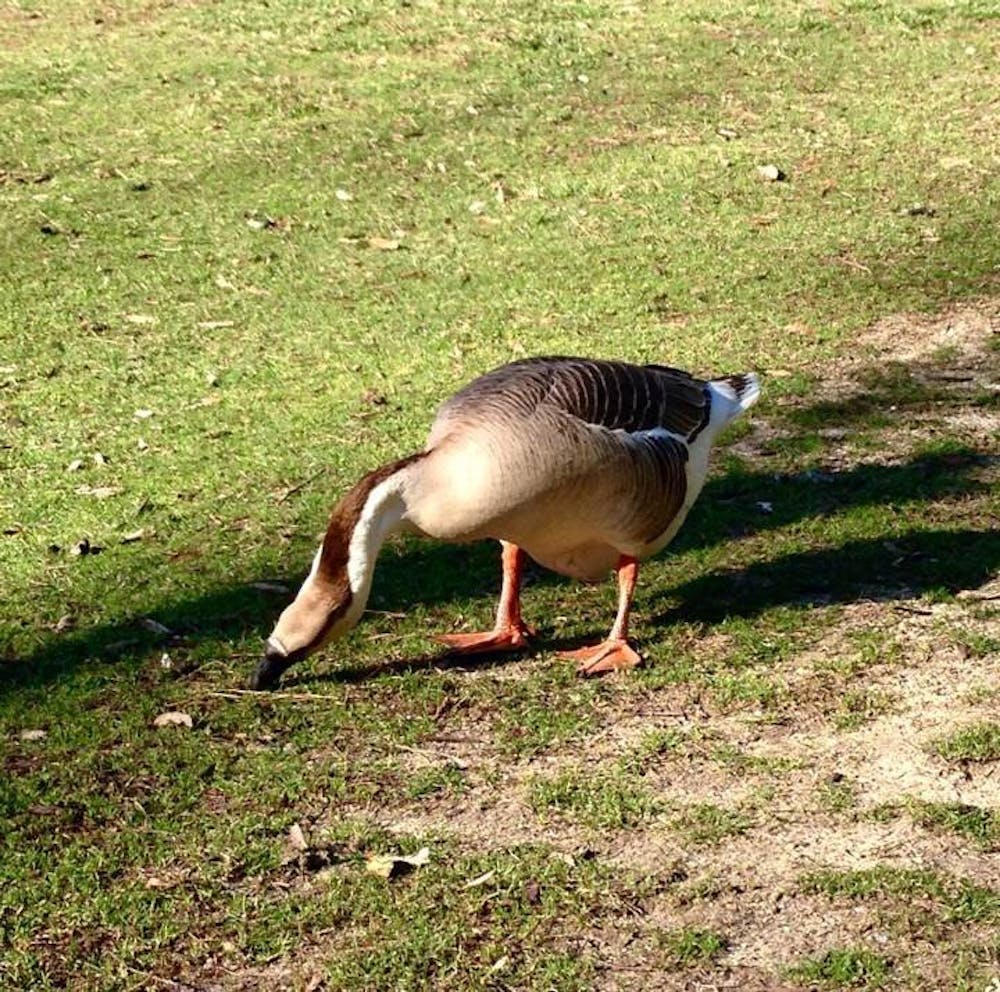Only a year ago it would have seemed impossible. The tyrannical reign of the Triceragoose is as closely associated with University of Richmond as a ten figure endowment or a terrible Wi-Fi connection. But could it be that the influence of the Triceragoose is on the decline? I initially found it hard to believe, but in the past year there is no denying a downward trend.
The era of the Triceragoose extends beyond my years at UR, so I am only able to speculate about what I’ve come to witness in the past two years. Many from last year remember its infamous orange-billed mate. This was a bird that still exhibited the undiluted traits of its Velociraptor ancestors. We still hear the blood-curdling shrieks and see the open-beak rhino-charges in our nightmares. Together with its horned mate, the two made for quite the scientific enigma. They were the first ever alpha-predators who fed exclusively on grass, supplemented of course by D-hall bread sacrifices from the provincial population. They were the unstoppable force to the lake’s immovable object.
Today you’ll notice that the mate is gone. There are many theories as to what happened to the orange-billed goose. Some say that the ROTC detachment captured it for testing as part of a program designed to improve cadet aggression. I am dubious, because surely UREMS would’ve detailed the carnage suffered by those poor cadets. Others swear that a treacherous duck cohort staged a Roman Senate-esque betrayal of the orange-bill upon the grassy knoll of Boatwright Tower. Regardless of what happened, I don’t believe that such a creature would ever go quietly into the night. I’ve heard some mumblings about a shadowy creature inhabiting Westhampton Lake. Perhaps the essence of the fallen goose lives on in the form of this alleged otter.
Whatever theories may be out there, one thing is for sure, and it’s that the Triceragoose was more powerful with its bloodthirsty and belligerent mate at its side. Missing are the everyday stories of terrifying close encounters with sharp beaks and beady eyes. Freshmen don’t cower in fear along Richmond Way. More and more I hear from people who have hand-fed the Triceragoose. This blows me away. It wasn’t too long ago that I felt like every encounter I had with the creature was a dangerous temptation of its omnivorous side. Has the Triceragoose gone soft? Has it lost its killer edge?
Maybe it is deeper than that. It’s hard to connect with such a ravenous beast on a human level, but perhaps we should have empathy for the Triceragoose. It may have fallen on hard times. In the natural world, it is well known that geese mate for life. Having your mate taken away is certainly a traumatic experience. In an environment as small as Westhampton Lake, Triceragoose and the orange-bill must have recognized their uniqueness. Perhaps their bond was strengthened through their joint dominance of the environment. Now all alone, Triceragoose could recognize that it is the last of its kind.
I’m not sure if I’ll ever be able to walk by the Triceragoose without my guard up and my body primed for a quick escape. But perhaps now I’ll be able to see that behind the aggression and intimidating features is a creature in this high stress environment just as troubled as the rest of us.
Have your own Triceragoose stories? You can submit anonymously to http://goo.gl/forms/s6m8Edzq0A
Enjoy what you're reading?
Signup for our newsletter
Support independent student media
You can make a tax-deductible donation by clicking the button below, which takes you to our secure PayPal account. The page is set up to receive contributions in whatever amount you designate. We look forward to using the money we raise to further our mission of providing honest and accurate information to students, faculty, staff, alumni and others in the general public.
Donate Now



